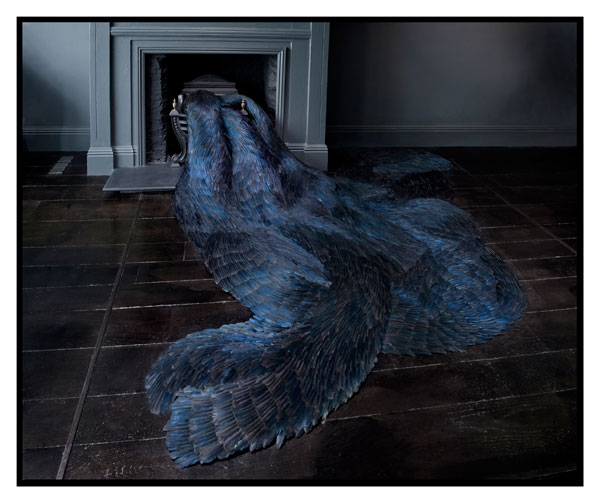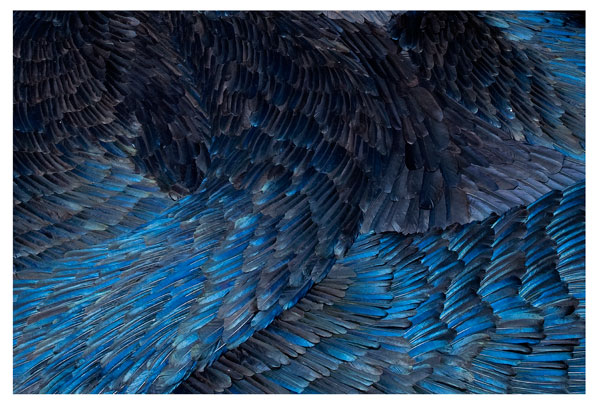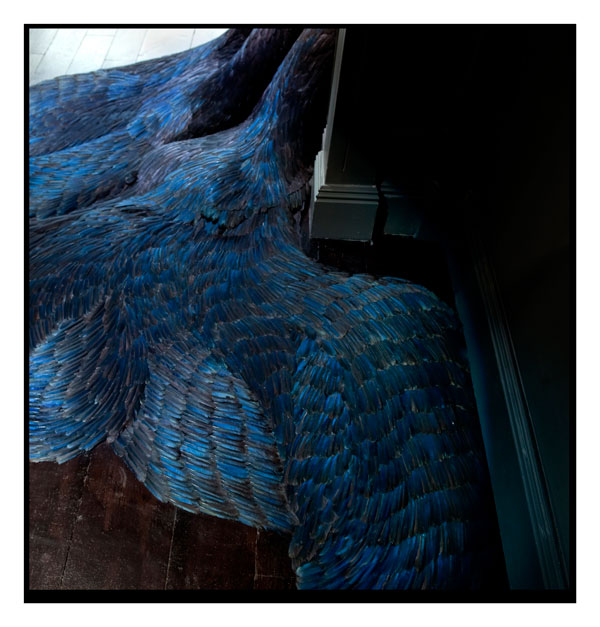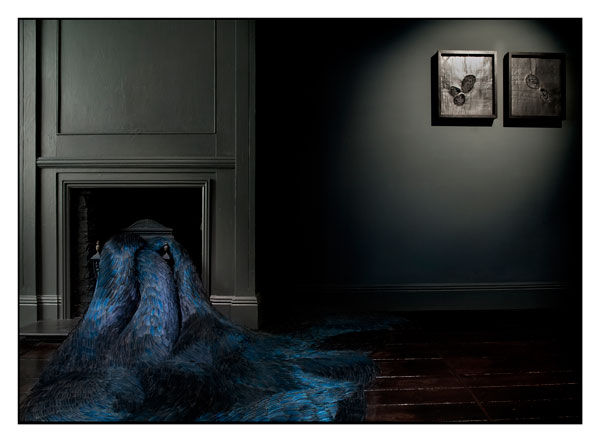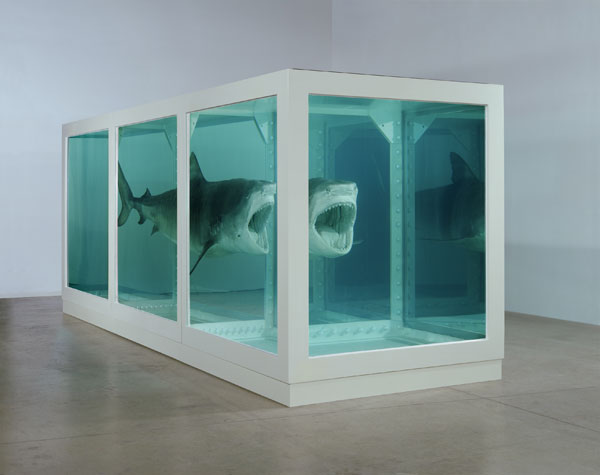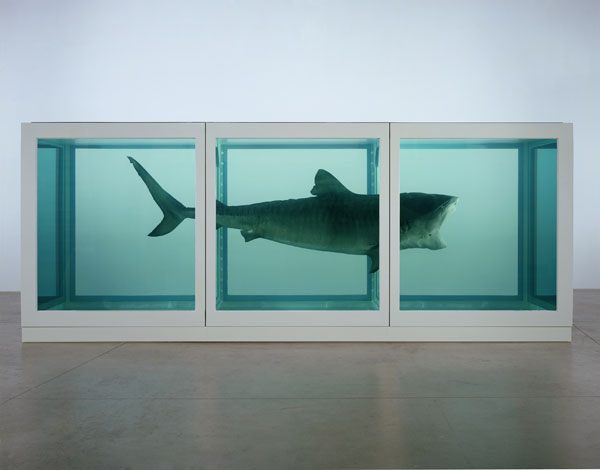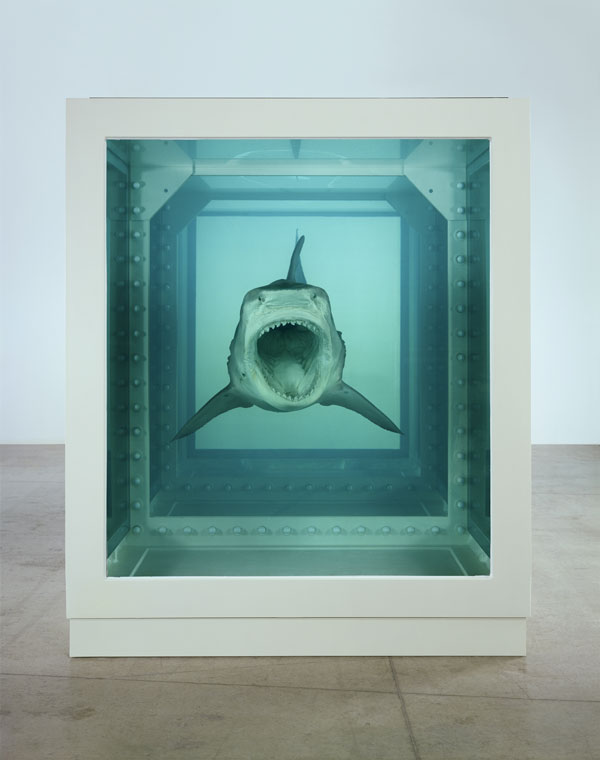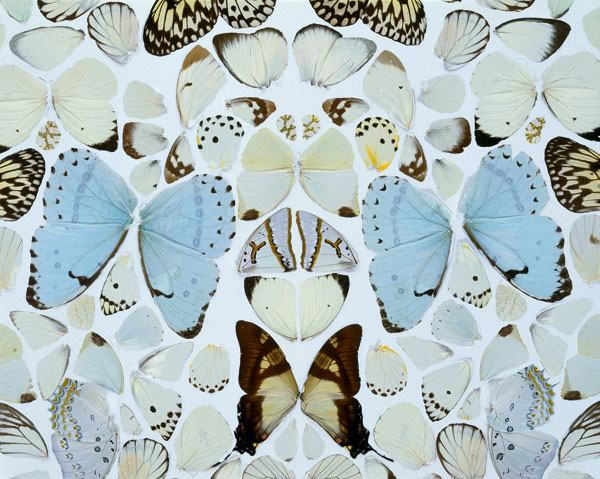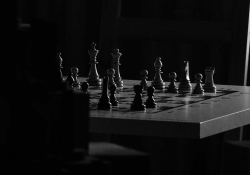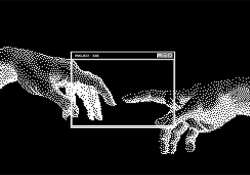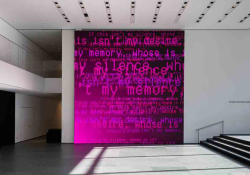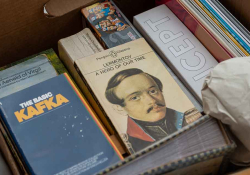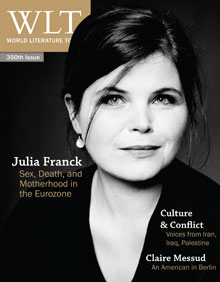London and the Grotesque
London is peppered with the grotesque. Is this a revival of a Dickensian past, Johnny Depp style, or are we creating a new carnivalesque? From pickled sharks to supermodel yoga, how close must you get to the grotesque to understand it?
A cyclist in yellow spandex, splattered with fake blood, wriggles past. He is followed by a nurse holding onto a Marie Antoinette wig and oxygen mask. I leave the dance floor of Torture Garden’s Halloween ball and manage to get lost in the winding stairways of the converted basement of St. Matthew’s church: tonight’s venue to the world’s largest fetish club night. I am here because theater director Meyerhold believed that great theater should blend the audience and the actors together, in an attempt to present “the fireworks of life’s contrast, conflicts, and dissonances.” I wanted to write about the grotesque and was looking for a living example: a space of blurred boundaries between participants and observers, a real, living carnival.
Perhaps it is little wonder, then, that London has an appetite for the grotesque. Far from shying away from its grizzly past, this city seems well aware that this is part of its appeal.
I find the toilets but cannot tell which are the ladies. I go for the one with the smallest queue and brush past the biggest breasts I have ever seen, let alone on a man. He tops up his fake blood tears. Upstairs is the dance floor, where a vampire animatedly explains his choice of leather for his new corset. A band sings in front of a projection of The Beauty and the Beast, the 1946 black-and-white movie version: classical grotesque. I am hoping that four hours at Torture Garden will result in a bag full of interesting characters to study. Somehow, the bag is still empty. I could throw in the beast with human emotions, but I am looking for contemporary, London lives. Then I notice a gargoyle, his skin painted black and silver, sitting on the edge of a sofa, hunched. A man wanders past with a worryingly lifelike penis attached to his head. Does he know that the medieval jester’s three-pointed hat was originally a “phallus and testicles”? I throw the penis-head jester in my metaphorical bag of characters, and chuck in the gargoyle for good measure. Above the dancing bodies and the hospital beds, where pretty nurses pretend to do terrible things, is a photographic projection of eyeballs and a lady in a hijab. Except that this is a fetish version, so her eyes and breasts are visible. Grotesque or too serious? Maybe too political to fit in with the grotesque. A tall black wig bobs behind a group in military uniforms. I slither past a PVC Napoleon with a butt-corset, to chat to the shy-looking man with black Amy Winehouse–beehive hair and a grey cardigan. Tugging at the sleeve, he says it is his first time.
By four in the morning, Torture Garden’s dungeon is full of buttocks. People have merged into odd-numbered limbs. I ask for my coat from a bored-looking cloakroom attendant in a plain T-shirt. Hundreds of backpacks are cluttered behind his feet. They belong to all those who came by public transport and changed into their plastics and leathers on site. I imagine hundreds of dull gray suits getting creased inside those backpacks. On my way out, I ask a man in a leather harness what he does for a living, just to get an idea. “Investment banker,” he says, shifting his weight from one leg to the other. I feel peeved; he could at least have lied and said “guillotine assistant” or “butcher.” Outside, Brixton is quiet. As Dickens said of London, “We pass a corner and we are in a changed world.”
I give up waiting for a night bus and hail a cab. I lock the cold out; it breathes at me on the other side of the window. Finally, in the back of the cab, I gather my thoughts. Did I just spend the night in a grotesque carnival?
Back home, I open my bag of characters: a gargoyle, a vampire in a corset, a jester, and a male Amy Winehouse. They take their place in my collection of characters among better-known icons of the grotesque world: the Phantom of the Opera, Rabelais’s giant in Gargantua “bellowing like a cow, laughs like a calf,” Victor Hugo’s Hunchback of Notre Dame, and last but not least London itself. “Enough to make angels weep” was Dickens’s description of this city.
The next day, I am trying to think up an excuse to turn down the offer of going to Killing Kittens, a masked swingers club. An old school friend manages the venue, so refusing might offend. Still, I suppose I can hide behind a mask. I spend the day piecing together my earlier grotesque finds: Kate Moss made of solid gold doing explicit yoga in a statue by Marc Quinn (Siren). Noble and Webster’s Dark Matter is a mass of embalmed, gutted rodents stuck together to cast a human shadow. One of the artists admits, “There were a few times when I was nearly sick making this.” Kate McGwire’s Slick is a collection of magpie and crow feathers stuck on octopus-like tentacles reaching out from an antique fireplace. Then there are big, hairy monster sculptures by David Altmejd that are riddled with holes. From these holes, hands and broken mirrors crawl in and out, to remind us that the grotesque body, by its very nature, is in continued relationship with the world. The body swallows the world and the world swallows the body.
One of the challenges of the grotesque, particularly in its artistic form, is getting it. I remember going to see Damien Hirst’s work, the artist also known as the “shark pickler,” at the British Museum. I found myself standing in front of a cupboard full of colorful skulls when a woman beside me asked her husband: “What’s so amazin’ about that?”
“I don’t know,” he said. “They probably are real skulls?”
“Urgh,” she said as they walked off.
I eavesdropped on another couple: the husband whispered to his wife, “I don’t get it!”
“Well, it’s an exhibition, something modern . . .”
“Oh,” he said, pretending to understand. I was pleased that I wasn’t the only one not to understand the point of all those skulls. I was about to leave when two little girls in matching jumpers dragged their parents to the exhibit shouting, “Look at the skulls, mummy! Look at those!”
“Is that blood?” one of the two girls asked, delighted that it might be.
“No, it’s just been painted,” the mother said.
“That’s amazing; that’s beautiful! Are they all the same?” the first little girl asked.
“No.”
“One of those must be the real skull! The others aren’t.”
How come she got it? She couldn’t have been more than seven years old! Then again, psychologist Carl Jung said that children don’t have filters in the same way that adults do. Their subconscious pops right through into their conscious. Maybe to get Hirst you have to think like a child? If one of those is the real skull, which is it? They are all plastic. I wondered which one was the grotesque skull made of bone, a skull to add to my bag of characters. A chill ran up my spine as I realized that the real skull, the only skull with blood among that lot, was mine. My adult consciousness swiftly blocked the thought; I refuse to put my own head into the bag of characters. I thought of what Roger Malbert said, that art is a cold carnival, not like the sort of carnival that you do in the street, at night, full of life. Art reminds “the reveller of his mortality,” while a proper, warm-blooded carnival is less of a contemplation but full of life.
Madeleine Renouard, an academic from Birkbeck College, London University, tells me, “The grotesque is linked to sex, but the grotesque mode is also linked to violence, barbary, capitalism. The grotesque was about the horrors of war, linked to a form of torture. You have to look backward. It is a reading of the world and nature that accepts extremes and deformations. Think about the monster,” she adds. “There is a sort of erotic attraction to the figure of the monster.” I gawp. Is there? Think like a child, think like a child. Beauty and the Beast, Phantom of the Opera, yes, I suppose. . . .
Following Madeleine’s advice, I look backward, back into London’s history. If London loves the grotesque, maybe its own history is the reason. I am almost home when fireworks dash up into the sky and light it up like glittering rain. Tonight is bonfire night.
In 1605 Guy Fawkes leaped from the gallows and broke his neck to save himself from having to feel the second part of his execution, namely being disembowelled. In 1665 a plague visited London. On another visit it took 38,000 souls; this time the Black Death killed 100,000 people (one-fifth of London’s population). Only the great fire of London finally stopped the Black Death in 1666. A tiny fire, it started in a bakery on Pudding Lane, spread across the city, and destroyed 13,500 homes. In 1888 came the “Autumn of Terror.” A serial killer was on the prowl in Whitechapel. Prostitutes were found murdered and mutilated by a man the press and Scotland Yard nicknamed “Jack the Ripper.” In 1940 London was bombed every night for fifty-seven nights by the German Luftwaffe. This killed over 21,000 people. They called this the Blitz.
Perhaps it is little wonder, then, that London has an appetite for the grotesque. Far from shying away from its grizzly past, this city seems well aware that this is part of its appeal. The result is a city that attracts £15 billion worth of tourist spending every year and counting. Former torture site, the Tower of London, is now classified as a World Heritage Sight. Jack the Ripper has his own tour, and every year delighted children brandish toffee apples while Guy Fawkes melts on top of a bonfire into the wet grass.
But the grotesque is not just blood, guts, war, and death, or as Tim Burton joked to Johnny Depp on his method for preparing the actor for his role as Sweeney Todd: “We squirted blood in your eyes. . . . Several tubes of preparation worked out fine.” In fact, grotesque art originally had nothing to do with guts and blood. The word comes from the discovery in the 1480s of what was thought at the time to be “grottos.” Upon the walls of what turned out to be the palace of Emperor Nero were part man–part animal depictions interweaved with plants and architecture. Classical monsters, centaurs, sirens, and grylles (heads with no bodies but with limbs directly joined). Grotesque art can be seen in this original form along the walls of the Ufizzi Gallery in Florence. One of my favorite sightings is a pan (part goat–part man) shooting an arrow into an old man’s naked buttocks as he trips.
This initial concept of the grotesque as mythical figures is still loosely present in London’s grotesque art. The animal part of pans gave the human audience a sense of distance; the truths of our fears were disguised in amusing, carnivalesque depictions. What Hirst cannot do with a human being, he does with animals. But are these cold artistic expressions and the topsy-turvy world of fetish parties forgetting about the original sense of grotesque as uplifting and optimistic? Hirst admits that for him “the skull is a really great symbol because it doesn’t give you any answers. This optimism and the hope associated with trying to decorate a skull is such a futile thing, to make death more palatable, when it’s totally unpalatable.” I remember Madeleine’s comment that it is about accepting extremes and deformations. By playing the jester you remind your audience and yourself that tomfoolery and deformation are part of life.
I remember the vampire in the corset, telling me with a flourish of his lace sleeve, “You don’t always get what you want in the real world, which is why you need another life. You might be trapped in a relationship or feel judged, so you need a forum of expression; that’s what the fetish scene is, another life.” The perfect carnival to cope with the real world?
“That is an interesting apologetic for it,” Reverend Hufton from the Clapham Methodist church says, as I pester him for his opinion on fetish parties. “I’m all up for sex. But if the person is not able to experience the quality of relationship which they seek other than at fetish events, then whilst that person is helped, I think there is another route in the real world. If you think ‘I am a worm,’ then I say come on, wake up, because that’s not what you are called to be. Not to be boring-goody-goody, but to be fully human.”
As I sit in Reverend Hufton’s living room, I try and explain the difference between Torture Garden “pain” and “pain as suffering.” I hint that the pain inflicted in this carnivalesque way is a challenge, an experiment, useful for artists. But I hear myself speak, and I sound like I am promoting self-flagellation. I wonder how close to the grotesque I have to get to get the grotesque? If you were to get right up close to it, what would you turn into? An artist? A jester? A fetishist? I could always follow the vampire’s advice and make the most of London’s “huge audience of willing submissive men by becoming a full-time dominatrix.” I turn to London. It hunches its mighty shoulders, as if to say, “You can be whatever you want.” As Dickens said, this city is “frightful with excess of human life,” and it seems to me that this is just how London likes it.
London
